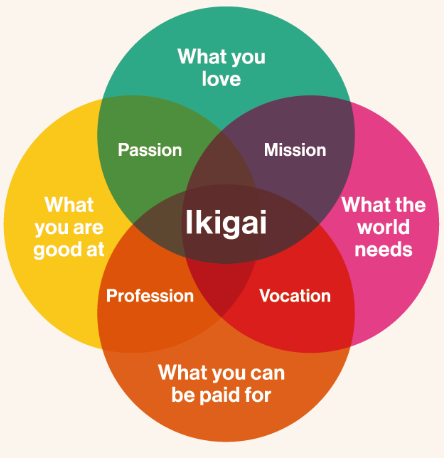EiMS and Yellowstone
The connection between Yellowstone National Park and the Ethical Integrated Management System (EiMS) lies in their shared mission to foster sustainable ecosystem management, preserve biodiversity, and create long-term societal benefits. Yellowstone’s legacy of conservation provides a powerful foundation for EiMS to amplify its principles and demonstrate real-world applications. Here's how EiMS can leverage and share the positive outcomes of Yellowstone's legacy:
---
1. A Legacy of Global Leadership
Yellowstone’s Contribution: As the world’s first national park, Yellowstone set the precedent for protecting natural resources for the benefit of humanity. It inspired the global movement for national parks and conservation.
EiMS’s Opportunity: EiMS can use Yellowstone’s success story to advocate for ethical, integrated ecosystem management globally.
Showcase Yellowstone as a model of conservation that demonstrates how combining preservation with public access creates long-lasting ecological and social benefits.
Use Yellowstone’s history to illustrate the necessity of balancing conservation with stakeholder engagement and sustainable resource use.
---
2. Bridging Biodiversity and Sustainability
Yellowstone’s Contribution: The park’s efforts to protect species like bison, wolves, and grizzlies show the importance of biodiversity in maintaining healthy ecosystems. The reintroduction of wolves in 1995 is a prime example of how targeted action can restore ecological balance.
EiMS’s Opportunity: Leverage Yellowstone’s biodiversity success to promote integrated species management in other ecosystems.
Develop programs that replicate Yellowstone’s species conservation strategies in areas managed under EiMS.
Highlight Yellowstone’s role in showing how restoring ecosystems can create positive ripple effects for entire regions.
---
3. Ecosystem Connectivity and Landscape Management
Yellowstone’s Contribution: As part of the Greater Yellowstone Ecosystem, the park has shown how managing landscapes beyond park boundaries ensures long-term ecological health.
EiMS’s Opportunity: Use Yellowstone to advocate for landscape-scale approaches in EiMS projects.
Highlight the importance of neighboring forests and ecosystems in creating connectivity corridors for wildlife.
Demonstrate how collaborative management between governments, local communities, and conservation organizations enhances outcomes.
---
4. Data-Driven Conservation
Yellowstone’s Contribution: Scientific research and monitoring have been integral to Yellowstone’s management. From studying geothermal features to tracking wildlife, the park has become a living laboratory.
EiMS’s Opportunity: Build on Yellowstone’s use of data and research to enhance EiMS’s biocybernetic framework.
Showcase how data-driven decision-making in Yellowstone leads to adaptive management strategies.
Use Yellowstone’s legacy to demonstrate the value of AI and advanced technologies in real-time ecosystem monitoring.
---
5. Climate Change Resilience
Yellowstone’s Contribution: The park provides a case study on the effects of climate change, including shifting ecosystems and increased wildfire activity.
EiMS’s Opportunity: Share Yellowstone’s climate challenges and strategies to build resilience in EiMS-managed areas.
Highlight Yellowstone’s ability to adapt to climate impacts as an example of resilience-building through integrated management.
Use Yellowstone’s experience to develop climate-smart policies for EiMS’s projects.
---
6. Community Engagement and Ethical Stewardship
Yellowstone’s Contribution: The park has historically engaged local communities, scientists, and Indigenous groups to balance conservation with cultural and economic interests.
EiMS’s Opportunity: Use Yellowstone’s legacy to advocate for community-driven conservation.
Showcase the importance of including Indigenous knowledge and local perspectives in ecosystem management.
Highlight Yellowstone’s role in fostering ethical partnerships as a blueprint for EiMS’s stakeholder engagement strategies.
---
7. Education and Advocacy
Yellowstone’s Contribution: The park has been a hub for environmental education, inspiring generations of conservationists and policymakers.
EiMS’s Opportunity: Build on Yellowstone’s educational role to advocate for ethical and sustainable practices worldwide.
Create educational materials and campaigns that connect Yellowstone’s achievements to EiMS’s goals.
Use Yellowstone’s story as a case study to inspire broader adoption of integrated management systems.
---
8. Policy Influence and Scaling Impact
Yellowstone’s Contribution: The park’s creation led to the establishment of the National Park System, a global model for protected areas.
EiMS’s Opportunity: Use Yellowstone’s influence on policy to scale EiMS principles to new regions.
Highlight Yellowstone as evidence of how ecosystem protection can drive policy innovation.
Promote EiMS as a modern evolution of Yellowstone’s principles, integrating ethics, AI, and sustainability.
---
Conclusion: EiMS as Yellowstone’s Legacy Partner
EiMS can serve as a modern extension of Yellowstone’s legacy, transforming its historical achievements into actionable frameworks for global sustainability. By integrating the lessons learned from Yellowstone into its biocybernetic framework, EiMS can:
Showcase the positive outcomes of ethical and integrated management.
Expand Yellowstone’s legacy to ecosystems worldwide.
Advocate for policies and practices that ensure a sustainable and equitable future.
This partnership between Yellowstone’s historical significance and EiMS’s innovative approach can bridge the past and future of conservation, creating a blueprint for ethical and integrated ecosystem management on a global scale.
.png)


Comments
Post a Comment